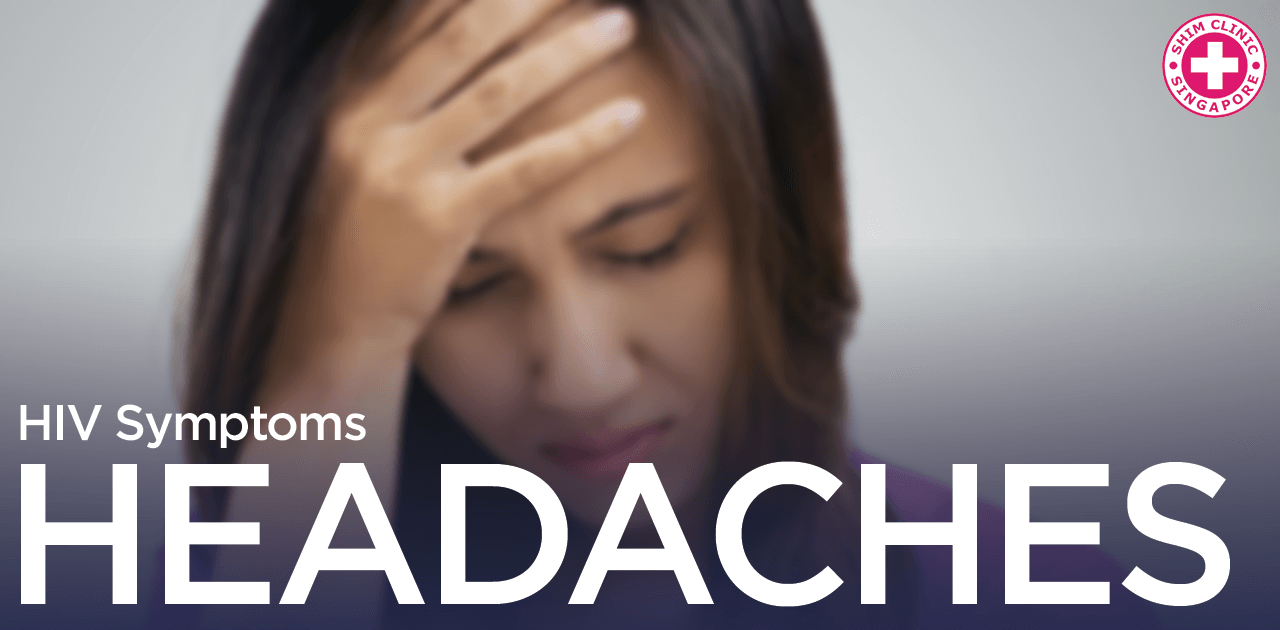HIV Headache Singapore | Shim Clinic
| Help me about HIV Headache ! |

| Permalink: https://shimclinic.sg/hiv-headache |
When first infected with HIV, some people will have symptoms, while others won’t. If present, they are general symptoms of illness, which may include headache. Headaches can be due to stress, or can be caused by a variety of infections. To get the HIV test you need, disclose your possible exposure.
When first infected with HIV, many people don’t have any symptoms and don’t even know that they’re infected. However, others do have symptoms, although they may not recognize that these are due to HIV. These are general symptoms of illness, such as fever, nausea, and headache. The early phase of the HIV infection is known as acute HIV infection, and it begins 2 to 4 weeks after the HIV exposure.
One of the possible signs of acute HIV infection is headache. Usually, this is a general pain in the head, rather than localized to one particular spot. The headache will occur frequently, or may never go away at all. Because the acute HIV infection can last for several weeks, the unrelenting headache can be very uncomfortable. Although taking anti-inflammatory medications may help temporarily, the headache will keep coming back.
- When first infected with HIV, some people will have symptoms, while others won’t.
- The symptoms are general symptoms of illness, such as fever, nausea, and headache.
- Headaches due to HIV are usually generalized headaches that don’t go away. They begin 2-4 weeks after the exposure and can last for weeks after they begin.
- Headache is a very common symptom of many different illnesses.
- Make sure that you disclose any possible exposures to HIV. Otherwise, you may not get an HIV test, or the right kind of HIV test to find an early infection.
Headache is not just one of the possible HIV symptoms. It’s also a general symptom of many different types of illness, including many infections. For example, it’s very common to have pain in the head due to the common cold or influenza (the flu). Some infections tend to cause more localized pain, such as sinusitis (a sinus infection), which may cause sharper pain in the face, but can also be a more general headache. Many people also suffer from tension headaches, which are due to muscle tension and are related to stress. Lack of sleep and feeling anxious are also common causes of a headache.
To figure out whether your headache is actually due to acute HIV infection, you’ll need to have an HIV test. Make sure that you tell your doctor about any possible exposure to HIV (such as a broken condom or sharing equipment while injecting drugs) and about any other possible HIV symptoms you may have, such as fever or nausea. There are many causes of headache that are more common than HIV, so your doctor may not do an HIV test unless you tell him or her about your possible exposure. No HIV test can detect HIV immediately after infection, but some tests can find HIV earlier than others, so the right type of test will need to be used. This is why it’s important to be completely honest with your doctor about all of your activities.
Sources:
Mayo Clinic. “STD symptoms: Common STDs and their symptoms.” Mayo Clinic. Published 18 Mar 2015. Accessed 20 Jul 2016. http://www.mayoclinic.org/std-symptoms/art-20047081
Centers for Disease Control and Prevention. “Screening Recommendations Referenced in Treatment Guidelines and Original Recommendation Sources.” Centers for Disease Control and Prevention. Published 04 Jun 2015. Accessed 20 Jul 2016. http://www.cdc.gov/std/tg2015/screening-recommendations.htm
Centers for Disease Control and Prevention. “HIV/AIDS.” Centers for Disease Control and Prevention. Published 05 Jul 2016. Accessed 27 Jul 2016. http://www.cdc.gov/hiv/
Centers for Disease Control and Prevention. “HIV Basics – Testing.” Centers for Disease Control and Prevention. Published 12 Jul 2016. Accessed 20 Jul 2016. http://www.cdc.gov/hiv/basics/testing.html
U.S. Department of Health & Human Services. “Post-Exposure Prophylaxis (PEP).” AIDS.gov. Published 21 Sep 2015. Accessed 20 Jul 2016. https://www.aids.gov/hiv-aids-basics/prevention/reduce-your-risk/post-exposure-prophylaxis/
| Timeline | HIV | STD | Pregnancy |
|---|---|---|---|
| Before exposure | |||
| Contraception (females only) | |||
| HIV PrEP (pre-exposure prophylaxis) - Stop HIV infection before exposure | STD vaccine: - Hepatitis vaccine - HPV vaccine | ||
| STD / HIV exposure | |||
| 0-72 hours | HIV PEP (post-exposure prophylaxis) - Stop HIV infection after exposure | STD testing * - Screening test - to look for asymptomatic infections - from previous exposures | Emergency contraception with the morning-after pill (females only) |
| 2 weeks | HIV DNA Test | ||
| 1 month | HIV 4th Generation Test - SD Bioline HIV Ag/Ab Combo - Fingerprick blood sampling. - 20 minutes to results | ||
| 3 months | HIV 3rd Generation Test - OraQuick® HIV-1/2 Antibody - Oral fluid or - Fingerprick blood sampling. - 20 minutes to results | STD testing * - Full & comprehensive - diagnostic test - to look for current infections | |
| Watch for | HIV Symptoms | STD Symptoms | |
| If infected | HIV Treatment | STD Treatment | Abortion |
References